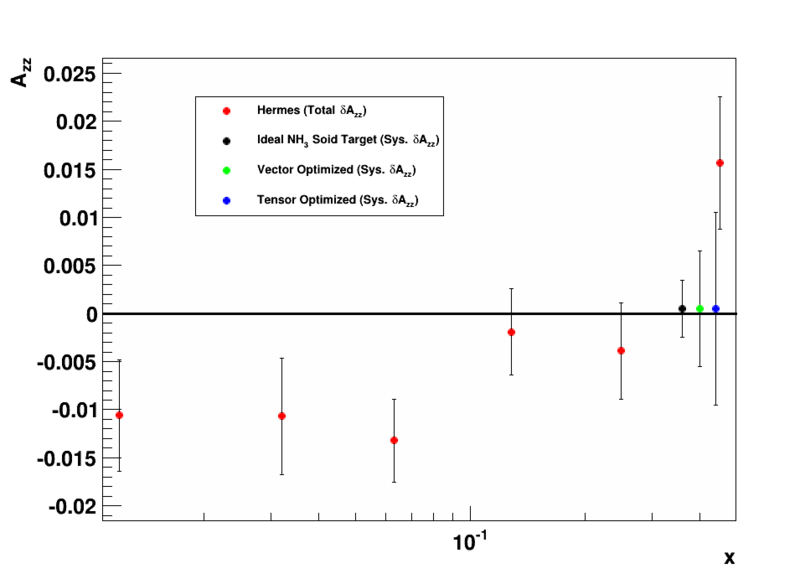Difference between revisions of "Final Look"
| Line 6: | Line 6: | ||
with an absolute systematic uncertainty estimated from, | with an absolute systematic uncertainty estimated from, | ||
| − | [[Image:Azz_sys.png| | + | [[Image:Azz_sys.png|400px]] |
To obtain tensor polarization by optimizing vector polarization we expect a tensor polarization of | To obtain tensor polarization by optimizing vector polarization we expect a tensor polarization of | ||
Revision as of 10:37, 16 April 2013
Error estimate based on previous analysis using standard solid polarized targets results indicated in first write-up
based on an asymmetry Azz
with an absolute systematic uncertainty estimated from,
To obtain tensor polarization by optimizing vector polarization we expect a tensor polarization of
Pzz=2-(4-3P2)1/2 assuming a Boltzman distribution at thermal equilibrium.
But not at thermal equilibrium under experiment (trying not to under estimate error)
Analytic relation not applicable for tensor Optimization (hole burning)
General limitations for all tensor polarized experiments to keep in mind:
1.) Ideal Pzz =2.5%-5%
2.) Vector Optimized Pzz =6.5%-12%
3.) Tensor Optimized Pzz =15%-25%
4.) Negative tensor polarization not yet achieved without hole burning (very unstable)
Best estimates for Cumulative Absolute Uncertainty (still just an estimate)

(No estimate included for background contamination or small coherent length nuclear effects)
What about other observables?
Still lots of experimental possibilities with tensor polarization:
1.) Cross section or Asymmetry (Axx) based on positive Vector Optimized only
2.) Electrodisintegration
3.) Photodisintegration
4.) CLAS photoproduction
Keep in mind that optimization in tensor polarization can lead to P=0 for other materials but not NH3. This can be considered for photon experiments.
Need to figure out what is interesting theoretically and not yet done...

